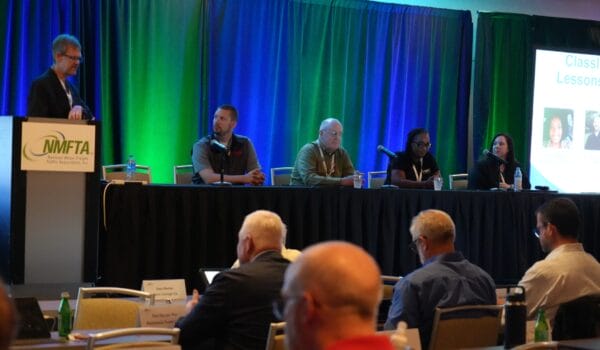Every so often we hear claims that the National Motor Freight Classification® (NMFC®) system is antiquated and should be replaced. Lately there has been a push from some quarters to replace the system with one based entirely on density.
But it never seems to get anywhere, and that’s for good reason.
One commentator expressed frustration that his drawn-out attempt to convince a large LTL shipper to switch to dimensional rates ended with the shipper wanting to revert back to the NMFC model.
Shippers know a good thing when they see it.
For one thing, these classifications are legacy. We know from our members that trucking companies have built their systems around them for decades, and they can’t just flip a switch because they see value in dimensioning.
But even if they could switch that easily, most wouldn’t do so because they recognize the value of the comprehensive approach the NMFC system takes. There’s nothing wrong with factoring density into pricing – in fact, density has always been a factor in the NMFC.However, it is only one factor.
In addition to density, NMFC also considers stowability, handling, and liability. That’s because all these factors impact the service demands that are placed on the carrier. Strictly dimensional pricing ignores that.
Two shipments can have freight with identical density but they can still be completely different when it comes to configuration, size and packaging. The 18 classifications we provide gives shippers a much more comprehensive standard.
People often look at NMFC as a pricing system, but it’s really more of a costing system. It gives shippers something to work from as they decide which carrier’s rates make sense for them. We recently received an e-mail from a shipper of cloth, who had a good understanding of our classification system and was able to reference it when negotiating rates with numerous carriers. Even if an LTL shipper doesn’t use classification-based rates, it gives the shippers a standard to help them decide if proposed rates are reasonable.
We have talked a great deal here about costing and pricing, but don’t overlook the importance of safety. The NMFC identifies various types of hazardous materials and assigns classifications based on the types of hazards involved, as well as the regulations that apply to those hazards. This information is vital to carriers so they can understand the hazards they are being asked to deal with.
Dimensioners alone simply can’t provide that information. They leave the carriers to rely solely on the checking of hazard labels, and provide no insight to understand what carriers are dealing with or how to manage it. The continued use of NMFC means safer roadways and a safer industry.
NMFC critics like to mention that the system has been around since the 1930s – as if we’re still using all the same classifications we used back then. In fact, the NMFC system is constantly being streamlined and modernized to respond to the changing needs of the LTL industry. We have always listened to our members when they expressed an interest in seeing the classifications evolve, and we are listening now as they tell us dimensioning is becoming more important.
We agree. We know that both classifications and dimensioning are critical, which is why our most recent docket, passed in October 2022, moves us even further toward a density-based classification system that will be self-adjusting. But unlike dimensional pricing, the NMFC takes the other factors mentioned above into account. The industry may be moving in the direction of more dimensioning, but classifications will still be needed to help support the industry.
A classification system that considers the full requirements and costs of service providers, and is constantly being adapted to new realities, is the best system we can possibly have. That’s why the LTL industry values our classification system, and they intend to keep using it.
We’ll make sure they can.







